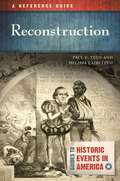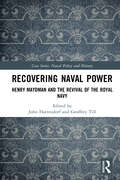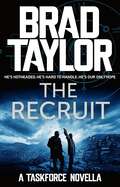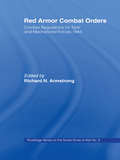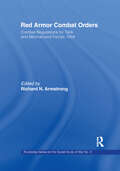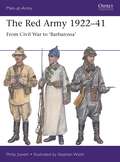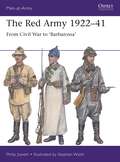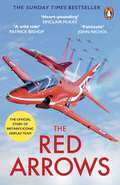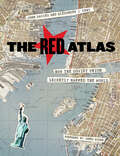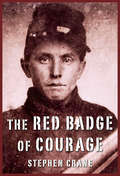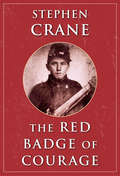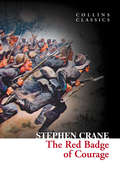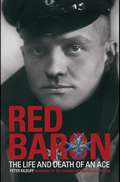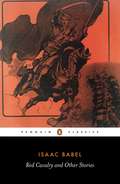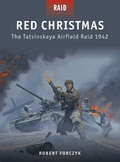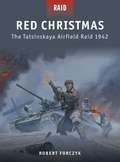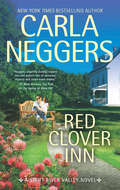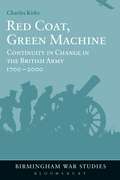- Table View
- List View
Reconstruction: A Reference Guide (Guides to Historic Events in America)
by Paul E. Teed Melissa Ladd TeedProviding an exciting narrative of Reconstruction based on current scholarship, historical sources, as well as interpretive essays on special topics, this book offers real insight into a controversial and critical period in American history.Reconstruction: A Reference Guide covers the entire period of Reconstruction (1863–1877) with a special emphasis on the struggle for social and political equality in the post-Civil War South. The book's analytical essays, selection of primary documents, and biographies of key participants give readers an understanding of social, political, and economic changes that occurred during this important period as well as provide opportunities to explore more specific issues and debates. Synthesizing and building on the work of recent scholars, the book documents how the central struggles of Reconstruction revolved around the meaning of freedom for former slaves. The essays describe how a new and sometimes deadly conflict over equal rights and racial justice raged throughout the South in the post-Civil War period and generated a constitutional crisis in the nation's capital as former slaves created alliances with sympathetic whites and sought to build a biracial democracy in the former Confederacy. Readers will not only understand the facts and events of the period, but will also be introduced to historical sources and key interpretive debates.
Reconstruction: A Reference Guide (Guides to Historic Events in America)
by Paul E. Teed Melissa Ladd TeedProviding an exciting narrative of Reconstruction based on current scholarship, historical sources, as well as interpretive essays on special topics, this book offers real insight into a controversial and critical period in American history.Reconstruction: A Reference Guide covers the entire period of Reconstruction (1863–1877) with a special emphasis on the struggle for social and political equality in the post-Civil War South. The book's analytical essays, selection of primary documents, and biographies of key participants give readers an understanding of social, political, and economic changes that occurred during this important period as well as provide opportunities to explore more specific issues and debates. Synthesizing and building on the work of recent scholars, the book documents how the central struggles of Reconstruction revolved around the meaning of freedom for former slaves. The essays describe how a new and sometimes deadly conflict over equal rights and racial justice raged throughout the South in the post-Civil War period and generated a constitutional crisis in the nation's capital as former slaves created alliances with sympathetic whites and sought to build a biracial democracy in the former Confederacy. Readers will not only understand the facts and events of the period, but will also be introduced to historical sources and key interpretive debates.
Recovering from Civil Conflict: Reconciliation, Peace and Development
by Edward Newman Albrecht SchnabelA number of international contributors emphasize the conceptual and practical challenges facing post-conflict societies and the international community in the management of the transition from civil conflict to peaceful coexistence.
Recovering from Civil Conflict: Reconciliation, Peace and Development
by Edward Newman Albrecht SchnabelA number of international contributors emphasize the conceptual and practical challenges facing post-conflict societies and the international community in the management of the transition from civil conflict to peaceful coexistence.
Recovering Naval Power: Henry Maydman and the Revival of the Royal Navy (Cass Series: Naval Policy and History)
by John B. Hattendorf Geoffrey TillThis book offers a new edition of Henry Maydman’s work Naval Speculations with a detailed commentary by two leading experts on its importance to the naval issues of the 21st century. Written at a revolutionary and troubling time, Maydman’s 1691 book offers an analysis of the state of the Royal Navy at the time, together with a set of recommendations for its improvement. It not only tells us a good deal about the Royal Navy of the time but also provides a general theory of why navies decline and what can be done to rejuvenate them. Recovering Naval Power shows that the issues he identifies have applied to every navy in every period. We are now seeing the dramatic rejuvenation of the Chinese Navy and the reactions to it of the US and other navies, together with a new rise in naval tensions in the Euro-Atlantic. Despite the obvious political, economic and technological differences between Maydman’s day and ours, this work shows that his recommendations could hardly be more relevant in today’s circumstances. Alongside the modified text of Naval Speculations, this book includes a preface and two chapters addressing, first, the Royal Navy of Maydman's time and his role in it and, second, the relevance of what Maydman said for the navies of the 21st century. The book concludes with some overall comments about Maydman and the recovery of naval power and recommendations for further reading. This book will be of much interest to students of naval history, maritime power, strategic studies, and International Relations in general.
Recovering Naval Power: Henry Maydman and the Revival of the Royal Navy (Cass Series: Naval Policy and History)
by John Hattendorf Geoffrey TillThis book offers a new edition of Henry Maydman’s work Naval Speculations with a detailed commentary by two leading experts on its importance to the naval issues of the 21st century. Written at a revolutionary and troubling time, Maydman’s 1691 book offers an analysis of the state of the Royal Navy at the time, together with a set of recommendations for its improvement. It not only tells us a good deal about the Royal Navy of the time but also provides a general theory of why navies decline and what can be done to rejuvenate them. Recovering Naval Power shows that the issues he identifies have applied to every navy in every period. We are now seeing the dramatic rejuvenation of the Chinese Navy and the reactions to it of the US and other navies, together with a new rise in naval tensions in the Euro-Atlantic. Despite the obvious political, economic and technological differences between Maydman’s day and ours, this work shows that his recommendations could hardly be more relevant in today’s circumstances. Alongside the modified text of Naval Speculations, this book includes a preface and two chapters addressing, first, the Royal Navy of Maydman's time and his role in it and, second, the relevance of what Maydman said for the navies of the 21st century. The book concludes with some overall comments about Maydman and the recovery of naval power and recommendations for further reading. This book will be of much interest to students of naval history, maritime power, strategic studies, and International Relations in general.
The Recruit: A gripping military thriller from ex-Special Forces Commander Brad Taylor (Taskforce Novella #5)
by Brad TaylorHe's hotheaded. He's hard to handle. He's our only hope. The Taskforce – a highly clandestine Special Forces unit – has a new operator. Whilst assessing Decoy's covert surveillance skills, some unexpected intel turns the mission from evaluation to operational. The Taskforce has no choice but to deploy on an untried, unapproved asset. Decoy is active in the field, with the lives of countless innocents in his hands. The Taskforce is backed into a corner in this electrifying novella, from New York Times bestselling author Brad Taylor. Praise for Brad Taylor: 'It's an excellent read, and I greatly enjoyed it' Nelson DeMille. 'Pike ranks right up there with Jason Bourne, Jack Reacher and Jack Bauer' John Lescroart. 'Logan is a tough, appealing hero you're sure to root for' Joseph Finder. 'Fresh plot, great actions, and Taylor clearly knows what he is writing about' Vince Flynn.
Red Armour Combat Orders: Combat Regulations for Tank and Mechanised Forces 1944 (Soviet (Russian) Study of War)
by Richard N. ArmstrongSoviet military leadership is unable or unwilling to disassociate itself from past experiences. Red Armour Combat Orders illustrates through captured regulations that many of the Soviet Techniques in armoured warfare have remained unchanged over the last four decades. Study of the regulations provides a fundamental understanding of current Soviet armoured tactics and the ways in which they may develop.
Red Armour Combat Orders: Combat Regulations for Tank and Mechanised Forces 1944 (Soviet (Russian) Study of War)
by Richard N. ArmstrongSoviet military leadership is unable or unwilling to disassociate itself from past experiences. Red Armour Combat Orders illustrates through captured regulations that many of the Soviet Techniques in armoured warfare have remained unchanged over the last four decades. Study of the regulations provides a fundamental understanding of current Soviet armoured tactics and the ways in which they may develop.
The Red Army 1922–41: From Civil War to 'Barbarossa' (Men-at-Arms)
by Philip JowettThis study explores the organization, history and uniforms of the Soviet Red Army during the 20 years between its victory in the Civil War and the invasion of the USSR by Germany in 1941.The two decades following the Bolshevik victory over the 'Whites' in the Russian Civil War saw widespread and fundamental developments for the Red Army. Nevertheless, these still left it largely unready to face the German's Operation Barbarossa in June 1941. Having been reduced in size and planning for modernization, the Red Army of the 1920s was employed to ruthlessly crush anti-Bolshevik opposition (real or suspected) in several regions of the USSR, notably Ukraine and Central Asia, and to fight a brief border war against Chinese Manchuria. During the 1930s, Stalin virtually 'beheaded' the army by a needless series of murderous purges of the officer class; despite this, the Red Army was victorious in clashes against Imperial Japan in the Nomonhan region in 1938–39, where General Zhukov earned his spurs. Simultaneously, the Soviet Union sent instructors and pilots to fight for the Republicans in the Spanish Civil War (1936–39). The non-aggression pact with Nazi Germany allowed Stalin to take over half of Poland in September 1939; but a few months later his 'Winter War' against Finland demonstrated serious inadequacies in the Red Army's readiness for modern warfare, which would be shockingly confirmed in the first days of Operation Barbarossa. This study explores the interwar history of the Red Army, detailing its campaigns, organization and uniforms, and focusing on the 20 years between its victory in the Civil War and the invasion of the USSR by Germany in 1941.
The Red Army 1922–41: From Civil War to 'Barbarossa' (Men-at-Arms)
by Philip JowettThis study explores the organization, history and uniforms of the Soviet Red Army during the 20 years between its victory in the Civil War and the invasion of the USSR by Germany in 1941.The two decades following the Bolshevik victory over the 'Whites' in the Russian Civil War saw widespread and fundamental developments for the Red Army. Nevertheless, these still left it largely unready to face the German's Operation Barbarossa in June 1941. Having been reduced in size and planning for modernization, the Red Army of the 1920s was employed to ruthlessly crush anti-Bolshevik opposition (real or suspected) in several regions of the USSR, notably Ukraine and Central Asia, and to fight a brief border war against Chinese Manchuria. During the 1930s, Stalin virtually 'beheaded' the army by a needless series of murderous purges of the officer class; despite this, the Red Army was victorious in clashes against Imperial Japan in the Nomonhan region in 1938–39, where General Zhukov earned his spurs. Simultaneously, the Soviet Union sent instructors and pilots to fight for the Republicans in the Spanish Civil War (1936–39). The non-aggression pact with Nazi Germany allowed Stalin to take over half of Poland in September 1939; but a few months later his 'Winter War' against Finland demonstrated serious inadequacies in the Red Army's readiness for modern warfare, which would be shockingly confirmed in the first days of Operation Barbarossa. This study explores the interwar history of the Red Army, detailing its campaigns, organization and uniforms, and focusing on the 20 years between its victory in the Civil War and the invasion of the USSR by Germany in 1941.
The Red Arrows: The Official Story of Britain’s Iconic Display Team
by David MontenegroTHE FIRST OFFICIAL HISTORY OF THE RED ARROWSDAILY MAIL BOOK OF THE WEEK'Heart-pounding, exhilarating . . . A fascinating testimony of jeopardy, cool heads and the sheer exultant addiction of flying.' SINCLAIR MCKAY'An exhilarating read! The next-best thing to taking the controls of a Hawk fast-jet. And you're much less likely to throw up.' BEN MILLER'Inspirational . . . Precision, style and dedication. The Red Arrows are the ultimate in teamwork.' TIM PEAKE'Perfectly enjoyable . . . As the Red Arrows head towards their 60th anniversary, it's clear the team's place in our hearts is secure.' DAILY MAIL'A wild ride . . . The ultimate insider guide, relating with great enthusiasm and insight what it means to be inside the cockpit as you scream through the skies at 350 to 450 miles per hour, within what feels like touching distance of your wingman, making continual nanosecond decisions that will result in certain death if you get them wrong.' TELEGRAPH, Patrick Bishop_________________________________________"Occasionally, you and the team come within read of perfection, up there in the rarefied air of the skies. You never know when those moments will come, but it's what you yearn for as a pilot."The Red Arrows represent the very best speed, agility and precision aerobatic flying in the Royal Air Force, and the people who wear those iconic red flight suits are rigorously selected not just for their flying skills, lightning-fast reflexes and nerves of steel, but for their mental resilience, courage and humility.Written by the Officer Commanding and former Red 1 Team Leader, Wing Commander David Montenegro, and full of never-before-shared tales from pilots past and present, this thrilling history is both a faithful record and a fascinating account of not only what it takes, but what it means, to be a Red Arrow._________________________________________Praise for the Red Arrows:'A lifetime's ambition . . . I still can't believe I've been in a fighter jet. It was fantastic - just to feel the G-force was spectacular.' LEWIS HAMILTON'So tight, crisp and professional' CHRIS HADFIELD'I can never quite believe that anyone can fly and aircraft with such precision' PROF. BRIAN COX'The skill level they have is just off the scale. The Red Arrows is an amazing display of quality' DAVID COULTHARD
The Red Atlas: How the Soviet Union Secretly Mapped the World
by John Davies Alexander J. KentNearly thirty years after the end of the Cold War, its legacy and the accompanying Russian-American tension continues to loom large. Russia’s access to detailed information on the United States and its allies may not seem so shocking in this day of data clouds and leaks, but long before we had satellite imagery of any neighborhood at a finger’s reach, the amount the Soviet government knew about your family’s city, street, and even your home would astonish you. Revealing how this was possible, The Red Atlas is the never-before-told story of the most comprehensive mapping endeavor in history and the surprising maps that resulted. From 1950 to 1990, the Soviet Army conducted a global topographic mapping program, creating large-scale maps for much of the world that included a diversity of detail that would have supported a full range of military planning. For big cities like New York, DC, and London to towns like Pontiac, MI and Galveston, TX, the Soviets gathered enough information to create street-level maps. What they chose to include on these maps can seem obvious like locations of factories and ports, or more surprising, such as building heights, road widths, and bridge capacities. Some of the detail suggests early satellite technology, while other specifics, like detailed depictions of depths and channels around rivers and harbors, could only have been gained by actual Soviet feet on the ground. The Red Atlas includes over 350 extracts from these incredible Cold War maps, exploring their provenance and cartographic techniques as well as what they can tell us about their makers and the Soviet initiatives that were going on all around us. A fantastic historical document of an era that sometimes seems less distant, The Red Atlas offers an uncanny view of the world through the eyes of Soviet strategists and spies.
The Red Atlas: How the Soviet Union Secretly Mapped the World
by John Davies Alexander J. KentNearly thirty years after the end of the Cold War, its legacy and the accompanying Russian-American tension continues to loom large. Russia’s access to detailed information on the United States and its allies may not seem so shocking in this day of data clouds and leaks, but long before we had satellite imagery of any neighborhood at a finger’s reach, the amount the Soviet government knew about your family’s city, street, and even your home would astonish you. Revealing how this was possible, The Red Atlas is the never-before-told story of the most comprehensive mapping endeavor in history and the surprising maps that resulted. From 1950 to 1990, the Soviet Army conducted a global topographic mapping program, creating large-scale maps for much of the world that included a diversity of detail that would have supported a full range of military planning. For big cities like New York, DC, and London to towns like Pontiac, MI and Galveston, TX, the Soviets gathered enough information to create street-level maps. What they chose to include on these maps can seem obvious like locations of factories and ports, or more surprising, such as building heights, road widths, and bridge capacities. Some of the detail suggests early satellite technology, while other specifics, like detailed depictions of depths and channels around rivers and harbors, could only have been gained by actual Soviet feet on the ground. The Red Atlas includes over 350 extracts from these incredible Cold War maps, exploring their provenance and cartographic techniques as well as what they can tell us about their makers and the Soviet initiatives that were going on all around us. A fantastic historical document of an era that sometimes seems less distant, The Red Atlas offers an uncanny view of the world through the eyes of Soviet strategists and spies.
The Red Atlas: How the Soviet Union Secretly Mapped the World
by John Davies Alexander J. KentNearly thirty years after the end of the Cold War, its legacy and the accompanying Russian-American tension continues to loom large. Russia’s access to detailed information on the United States and its allies may not seem so shocking in this day of data clouds and leaks, but long before we had satellite imagery of any neighborhood at a finger’s reach, the amount the Soviet government knew about your family’s city, street, and even your home would astonish you. Revealing how this was possible, The Red Atlas is the never-before-told story of the most comprehensive mapping endeavor in history and the surprising maps that resulted. From 1950 to 1990, the Soviet Army conducted a global topographic mapping program, creating large-scale maps for much of the world that included a diversity of detail that would have supported a full range of military planning. For big cities like New York, DC, and London to towns like Pontiac, MI and Galveston, TX, the Soviets gathered enough information to create street-level maps. What they chose to include on these maps can seem obvious like locations of factories and ports, or more surprising, such as building heights, road widths, and bridge capacities. Some of the detail suggests early satellite technology, while other specifics, like detailed depictions of depths and channels around rivers and harbors, could only have been gained by actual Soviet feet on the ground. The Red Atlas includes over 350 extracts from these incredible Cold War maps, exploring their provenance and cartographic techniques as well as what they can tell us about their makers and the Soviet initiatives that were going on all around us. A fantastic historical document of an era that sometimes seems less distant, The Red Atlas offers an uncanny view of the world through the eyes of Soviet strategists and spies.
The Red Atlas: How the Soviet Union Secretly Mapped the World
by John Davies Alexander J. KentNearly thirty years after the end of the Cold War, its legacy and the accompanying Russian-American tension continues to loom large. Russia’s access to detailed information on the United States and its allies may not seem so shocking in this day of data clouds and leaks, but long before we had satellite imagery of any neighborhood at a finger’s reach, the amount the Soviet government knew about your family’s city, street, and even your home would astonish you. Revealing how this was possible, The Red Atlas is the never-before-told story of the most comprehensive mapping endeavor in history and the surprising maps that resulted. From 1950 to 1990, the Soviet Army conducted a global topographic mapping program, creating large-scale maps for much of the world that included a diversity of detail that would have supported a full range of military planning. For big cities like New York, DC, and London to towns like Pontiac, MI and Galveston, TX, the Soviets gathered enough information to create street-level maps. What they chose to include on these maps can seem obvious like locations of factories and ports, or more surprising, such as building heights, road widths, and bridge capacities. Some of the detail suggests early satellite technology, while other specifics, like detailed depictions of depths and channels around rivers and harbors, could only have been gained by actual Soviet feet on the ground. The Red Atlas includes over 350 extracts from these incredible Cold War maps, exploring their provenance and cartographic techniques as well as what they can tell us about their makers and the Soviet initiatives that were going on all around us. A fantastic historical document of an era that sometimes seems less distant, The Red Atlas offers an uncanny view of the world through the eyes of Soviet strategists and spies.
The Red Badge of Courage: An Episode Of The American Civil War...
by Stephen CraneThe Red Badge of Courage is the fictionalized account of a Union soldier's life in the American Civil War. It recounts the experiences of lowly private Henry Fleming, who dreams of honour won on the battlefield. His illusions are undone however, when he comes face to face with the horrors of war. Stephen Crane's classic is, with the possible exception of Gone With the Wind, the best-known of all civil war novels.Sayre Street Books offers the world's greatest literature in easy to navigate, beautifully designed digital editions.
The Red Badge of Courage: An Episode Of The American Civil War...
by Stephen CraneThe Red Badge of Courage is the fictionalized account of a Union soldier's life in the American Civil War. It recounts the experiences of lowly private Henry Fleming, who dreams of honour won on the battlefield. His illusions are undone however, when he comes face to face with the horrors of war. Stephen Crane's classic is, with the possible exception of Gone With the Wind, the best-known of all civil war novels.Sayre Street Books offers the world's greatest literature in easy to navigate, beautifully designed digital editions.
The Red Badge of Courage: An Episode Of The American Civil War (Collins Classics)
by Stephen CraneHarperCollins is proud to present its new range of best-loved, essential classics.
Red Baron - The Life and Death of an Ace: The Life And Death Of An Ace
by Peter KilduffManfred Freiherr von Richthofen, the Red Baron, was the most successful fighter pilot of World War I, shooting down 80 enemy airplanes and receiving more high decorations than any other German combatant. In Red Baron: The Life and Death of an Ace, Peter Kilduff tells the story of this courageous and charismatic man: his comrades and enemies, the planes he flew, the battles he fought in, the political climate that caused his eventual disenchantment and the controversial circumstances of his death. Containing previously unpublished photographs, drawings on new source material from former East German state archives and making fresh insights into existing sources, Red Baron is the most up-to-date reference on the life of a legend.
Red Cavalry and Other Stories
by Isaac Babel Efraim Sicher David McDuffThroughout his life Isaac Babel was torn by opposing forces, by the desire both to remain faithful to his Jewish roots and yet to be free of them. This duality of vision infuses his work with a powerful energy from the earliest tales including 'Old Shloyme' and 'Childhood', which affirm his Russian-Jewish childhood, to the relatively non-Jewish world of his collection of stories entitled 'Red Cavalry'. Babel's masterpiece, 'Red Cavalry' is the most dramatic expression of his dualism and in his simultaneous acceptance and rejection of his heritage heralds the great American-Jewish writers from Henry Roth to Saul Bellow and Philip Roth.
Red Christmas: The Tatsinskaya Airfield Raid 1942 (Raid #30)
by Robert ForczykBy December 1942, the Soviets had surrounded the German 6th Army in Stalingrad, cutting off all lines of supply except through the air. Seeking to sever this last German lifeline, Soviet Command decided to launch a raid with the entire 24th Tank Corps to seize the airfield at Tatsinskaya, the primary operating base for the German airlift efforts. On 17 December, the 24th Tank Corps advanced toward Tatsinskaya, seizing the airfield on Christmas Eve. The Soviet tankers succeeded in destroying many Luftwaffe aircraft on the ground, but afterwards found themselves isolated and out of fuel behind the German lines. Generalfeldmarschall Erich von Manstein rapidly organized a counterattack with elements of two panzer divisions, crushing most of the raiding force between 26 and 28 December. Just before the raiding force was annihilated, it received permission to abandon its heavy equipment and escape back to Soviet lines on foot. Thus, the raiders accomplished their mission of severely disrupting the airlift to Stalingrad, but at the cost of an entire tank corps.
Red Christmas: The Tatsinskaya Airfield Raid 1942 (Raid)
by Robert Forczyk Johnny ShumateBy December 1942, the Soviets had surrounded the German 6th Army in Stalingrad, cutting off all lines of supply except through the air. Seeking to sever this last German lifeline, Soviet Command decided to launch a raid with the entire 24th Tank Corps to seize the airfield at Tatsinskaya, the primary operating base for the German airlift efforts. On 17 December, the 24th Tank Corps advanced toward Tatsinskaya, seizing the airfield on Christmas Eve. The Soviet tankers succeeded in destroying many Luftwaffe aircraft on the ground, but afterwards found themselves isolated and out of fuel behind the German lines. Generalfeldmarschall Erich von Manstein rapidly organized a counterattack with elements of two panzer divisions, crushing most of the raiding force between 26 and 28 December. Just before the raiding force was annihilated, it received permission to abandon its heavy equipment and escape back to Soviet lines on foot. Thus, the raiders accomplished their mission of severely disrupting the airlift to Stalingrad, but at the cost of an entire tank corps.
Red Clover Inn: A Knights Bridge Christmas The Spring At Moss Hill Red Clover Inn The River House (Swift River Valley #7)
by Carla NeggersNew York Times bestselling author Carla Neggers delivers an irresistible story about love, family and finding a place to call home..
Red Coat, Green Machine: Continuity in Change in the British Army 1700 to 2000
by Charles KirkeHow different were the men who fought at Blenheim and at Goose Green? Is there a human thread that connects the redcoat of 300 years ago with the British soldier of today? What would they find in common if they faced a common foe?This book is about the people in the Army, and the very human interactions between them in their daily lives. It marries the disciplines of Social Anthropology and Military History to provide a novel way of looking at the anatomy of the British Army at unit level from an entirely human perspective. Concentrating on the attitudes, expectations, and concerns expressed by the people involved, it sets out a set of simple models of life at regimental duty that can be used to describe, analyze and explain their behaviour over the past 300 years.The book is grounded on what soldiers of all ranks have said, using the author's research interview material for the modern witnesses, and memoirs, diaries, and letters (published and unpublished) for earlier ones.
